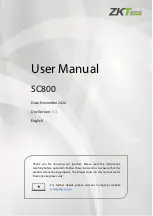MPC563XM Reference Manual, Rev. 1
44
Freescale Semiconductor
Preliminary—Subject to Change Without Notice
The eMIOS provides the following features:
•
16 channels
•
For compatibility with other family members selected channels and timebases are implemented:
— Channels 0 to 6, 8 to 15, and 23
— Timebases A, B and C
•
Channels 1, 3, 5 and 6 support modes:
— General Purpose Input/Output (GPIO)
— Single Action Input Capture (SAIC)
— Single Action Output Compare (SAOC)
•
Channels 2, 4, 11 and 13 support all the modes above plus:
— Output Pulse Width Modulation Buffered (OPWMB)
•
Channels 0, 8, 9, 10, 12, 14, 15, 23 support all the modes above plus:
— Input Period Measurement (IPM)
— Input Pulse Width Measurement (IPWM)
— Double Action Output Compare {set flag on both matches} (DAOC)
— Modulus Counter Buffered (MCB)
— Output Pulse Width and Frequency Modulation Buffered (OPWFMB)
•
Channel features:
— 24-bit registers for captured/match values
— 24-bit internal counter
— Global prescaler
— Selectable time base
— Can generate its own time base
•
Three 24-bit wide counter buses
— Counter bus A can be driven by channel 23
— Counter bus B and C are driven by channels 0 and 8, respectively
— Counter bus A can be shared among all channels. Channels 0 to 6 and 8 to 15 can share counter
buses B and C, respectively (channel 7 is not implemented).
•
Shared time bases with the eTPU through the counter buses
•
Synchronization among internal and external time bases
•
Shadow FLAG register
•
State of block can be frozen for debug purposes
1.4.14
eTPU
The eTPU is an enhanced co-processor designed for timing control. Operating in parallel with the host
CPU, eTPU processes instructions and real-time input events, performs output waveform generation, and
accesses shared data without host intervention. Consequently, for each timer event, the host CPU setup and
service times are minimized or eliminated. A powerful timer subsystem is formed by combining the eTPU

















